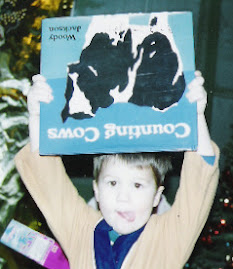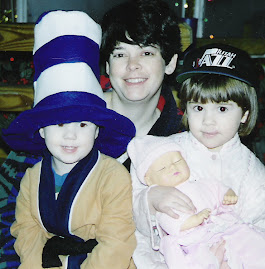...children who stay with their families
are less likely to become
juvenile delinquents or teen mothers and
more likely to hold jobs as young adults.
Massachusetts Institute of Technology
There is much professional debate on what's in the best interest of abused and neglected children. Usually the debate centers on a black and white choice. Birth Family is best because... or Foster Family is best because...
I'm wondering why there isn't more serious consideration of other placement alternatives such as the various ways children are placed in divorce situations. Why not half and half? Weekdays and weekends? Any combination that provides as much family life and foster family life as is deemed necessary for the best interests of the children. Not the easiest solutions. Not the cheapest solutions. Not the most politically correct solution. Just maybe more workable and effective solutions.
The present solutions of removing children from families and "
protecting these children from the threat of harm frequently comes with a high cost: trauma, fear, loss, guilt, grief, fractured relationships, and insecurity about the future."
But on the other hand, "the harsh truth is that simply
removing children from dangerous homes does not, by itself, ensure that they will receive the protection, nurturance, structure, and stability that they need to grow up healthy and successful.Too often, the opposite is true."
Because they believe that "most children are safest, emotionally and physically, in contact with their birth families" others are "searching for ways to increase birth family involvement and responsibility for children" through the use of
START Sobriety Teams and Recovery Teams. Their purpose is "to keep children safe; to develop a safe, nurturing, and stable living situation for them as rapidly and responsibly as possible; and to help their parents overcome their drug problems."
Alternative Response allows child protection agencies to divert cases to different tracks or response paths in order to better address the specific circumstances and needs of each report of child maltreatment. The philosophy behind alternative response is quite straightforward – one
size does not fit all in child protection matters.
In
Helping At-Risk Parents Become Better Parents Prevents Child Abuse and Neglect and Crime , you can read about a program that "can prevent most child abuse and neglect and reduce future crime. Quality in-home parent coaching programs have been shown to cut child abuse and neglect in half...Nurses or other trained professionals help parents manage stress, understand newborn health and nutrition needs, identify early warning signs, make their home child-safe, teach practical steps to meet their child's developmental needs."
Incredibly, this program "saves as much as $4 for every $1 dollar invested." But not surprisingly, "due to underfunding, only a fraction of the estimated 500,000 at-risk families nationally are being helped."
Attorneys Supporting Crime Victims and Crime Survivors: Children as Victims explain that
"Child abuse not only impacts its victims and their families, but society. It is intertwined with suicide attempts, separation, divorce, anti-social personality disorders, unemployment, underemployment, loss of life, monetary costs to society, and so much more. " Seems like a few more reasons to consider alternaticves, doesn't it?
The upcoming National Family Week (Nov. 18-24) "premise is:
Children live better lives when their families are strong, and families are strong when they live in communities that connect them to economic opportunities, social networks, and services."
These are just a few of the creative alternatives to the present child welfare system that by most accounts can only be called broken...

















 this Florida case?
this Florida case?

















